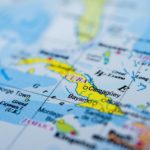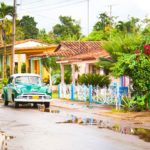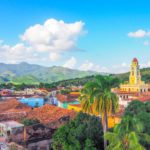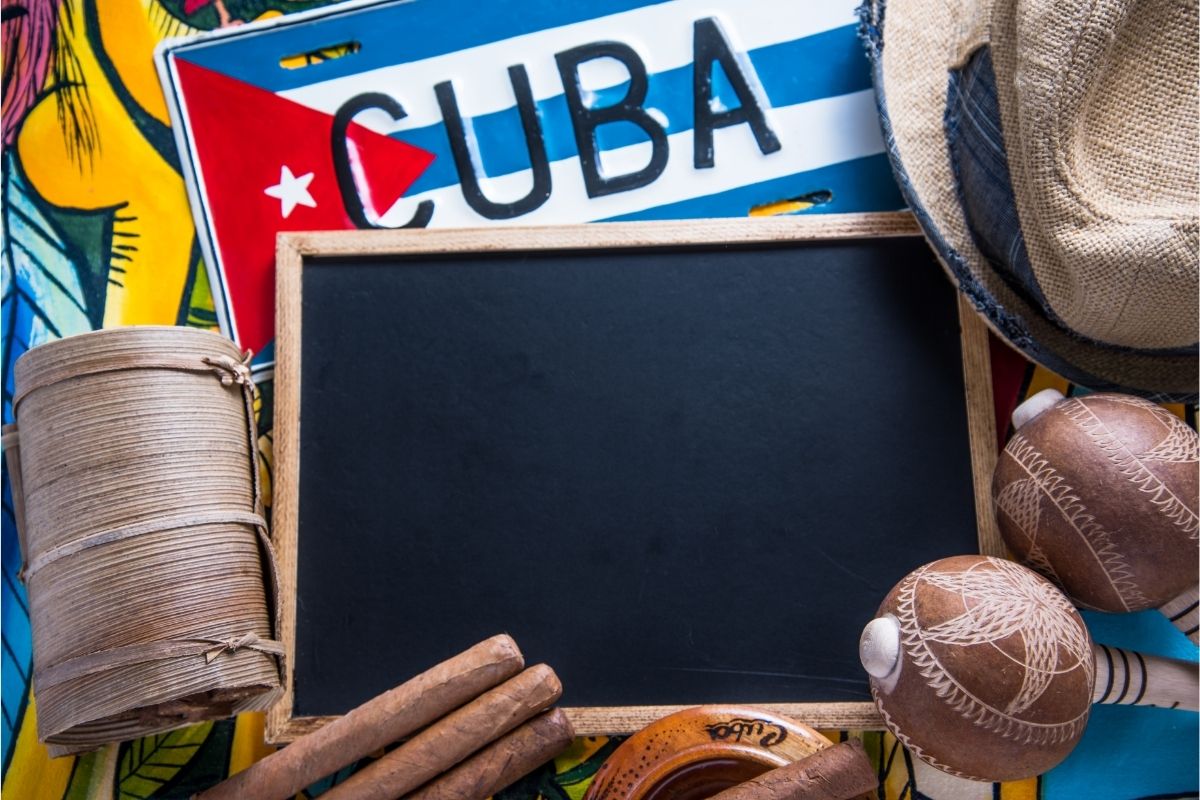Modern Cuba is a vibrant and fascinating place but what about Cuba’s early history? How did Cuba become the country that it is today?
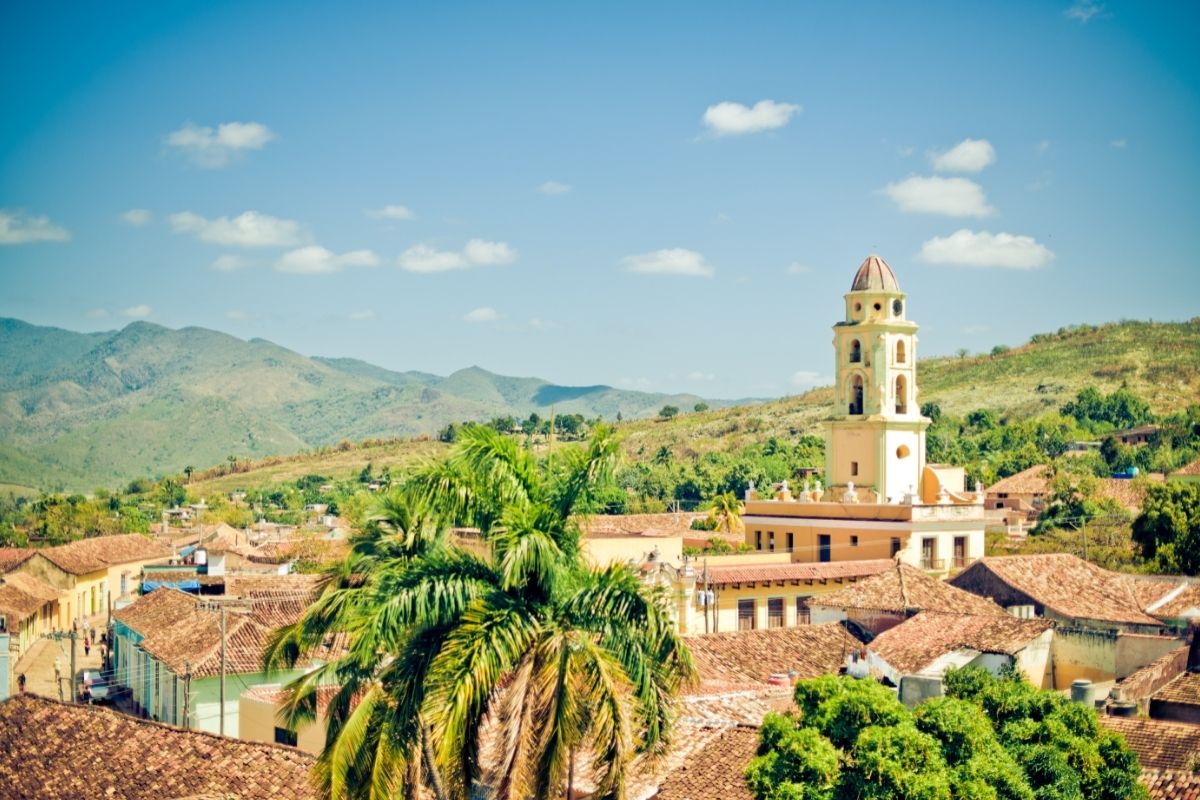
Let’s look at the history of Cuba’s indigenous peoples and how the sugar trade affected its early history.
Early Cuba
Christopher Columbus landed in Cuba on October 27, 1492.
Although he claimed the island for the Kingdom of Spain and named it Isla Juana for John, Prince of Asturias, the island was not uninhabited.
According to scholars, around 50,000 to 300,000 indigenous people inhabited the island when Columbus arrived.
There were three indigenous groups then: the Taínos, the Ciboneys, and the Guanajatabeyes.
The Guanajatabeyes are thought to be the first indigenous groups to have inhabited Cuba and were a cave-dwelling race of people.
The Taínos were the largest of the indigenous groups and they arrived on the island in the 1400s, having originated in the West Indies.
The Ciboneys can be traced back to South America where they were originally part of the Arawak group which later spread to the West Indies, also.
After arriving in Cuba, the Taínos took the Ciboneys as servants due to their more advanced ways.
After the arrival of Columbus and the Spanish, the three indigenous groups suffered from great brutality and disease over the course of around seventy years.
The indigenous people were largely wiped out or absorbed into Spanish lines of descent due to marriage.
Cuban Culture
The influence of the indigenous groups on early Cuban culture was small.
They had some influence on the Spanish that was spoken on the island during that time, but most of the island’s development was controlled by other factors.
The arrival of the Spanish and the colonialism that followed, the sugar trade, and the importation of slaves from Africa heavily affected the sociocultural and ecopolitical evolution of Cuba.
The continuing Spanish colonialism was fueled by the gold and mineral deposits on the island, as well as the religious conversion of the indigenous peoples, and the further exploration of the New World.
Many people thought that Cuba had an untapped wealth of gold deposits, although this proved to be untrue.
The first governor of Cuba, Diego Velazquez, established the first Spanish settlement in 1511 near the First City, Baracoa.
Velazquez was also responsible for the encomiendas system which mandated Christian conversion and lawfully gave indigenous peoples to Spaniards as laborers.
Conquistadors And Buccaneers
As we just learned, the explosion of the sugar trade and the continued exploration of the New World had a big influence on Cuba and this continued throughout the 1500s.
Havana became an important travel hub for Spanish conquistadors and their cargo as they journeyed into the New World.
It wasn’t just Cuba that was being affected by these factors, however.
Other islands across the Caribbean were also being colonized and found themselves at the center of European expansion as groups from other empires, particularly the English, French, and Dutch, tried to gain a foothold in the area.
By the 1600s, these European empires employed buccaneers to attack islands and peoples that were not under their rule.
Cuba suffered from buccaneers greatly during this time and was especially terrorized by Henry Morgan, an English buccaneer that targeted the eastern part of the island.
The Sugar Trade
The success of the sugar plantations in Cuba continued to drive the island’s development.
The sugar trade and the importation of slaves from Africa were both highly lucrative for Cuba and the island developed a dependence on both to continue growing.
However, as the years passed, the international reliance on the slave trade began to reduce and countries began to discuss its abolition.
In 1807, the British banned the Atlantic slave trade and this was quickly followed by an American ban in 1808.
Due to the reliance on the money generated by the sugar plantations and the fact that it was slave labor that drove that success, Cuba was reluctant to abolish slavery.
Cuba often resorted to illegal measures to continue using slaves and keep the sugar plantations running as they were the center of the great financial success and inequality of the Cuban elites.
This also led to a weakening of the nationalist movement in Cuba but eventually, international influence caused Cuba to abolish slavery and look to economic and political freedom through the 19th century.
Final Thoughts
We learned that early Cuba was populated by three indigenous groups called the Taínos, the Ciboneys, and the Guanajatabeyes.
After Christopher Columbus arrived on the island in 1492, Cuba was colonized by the Spanish and became a base for slavery, the sugar trade, and conquistador exploration of the New World.
It was a time of great change for Cuba.
If you enjoyed this article, you might enjoy our post on ‘Buena Vista Social Club – What Are These Songs About?‘.
- What Is The Largest Island In Cuba? - September 19, 2022
- Havana – Why Is It Cuba’s Most Exciting City? - September 19, 2022
- Cheapest Time To Visit Cuba (Ultimate Guide) - September 19, 2022





